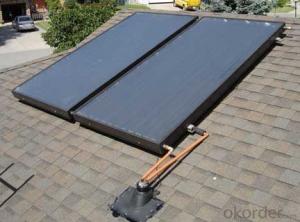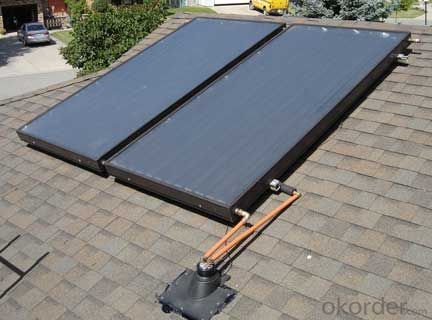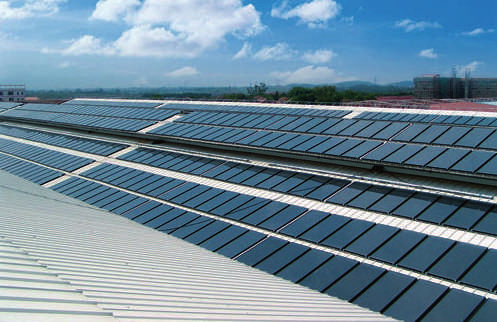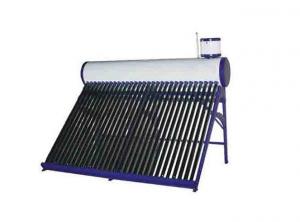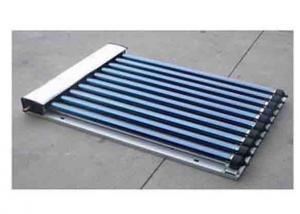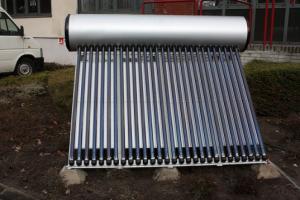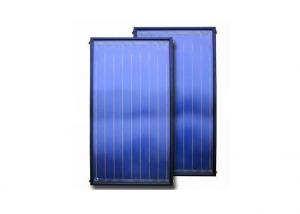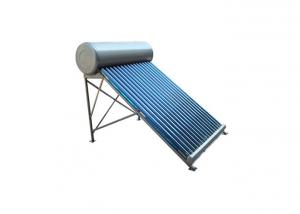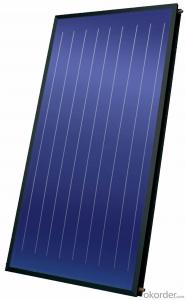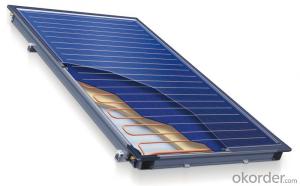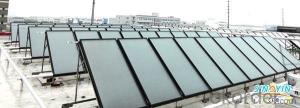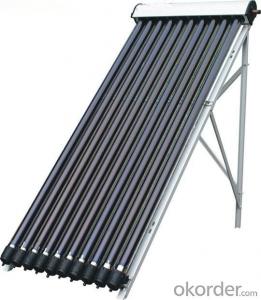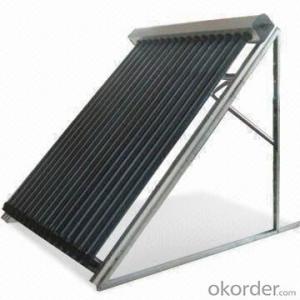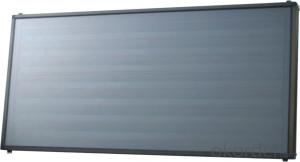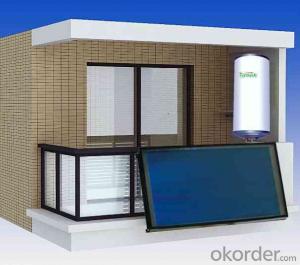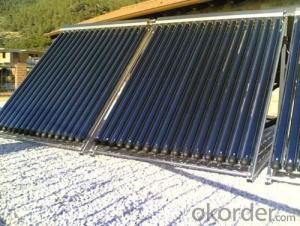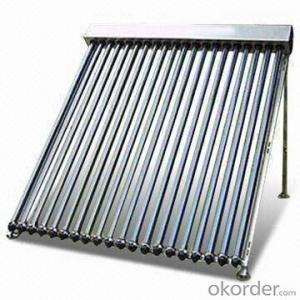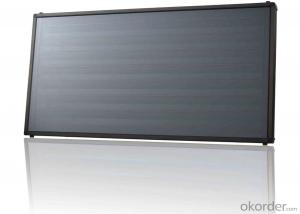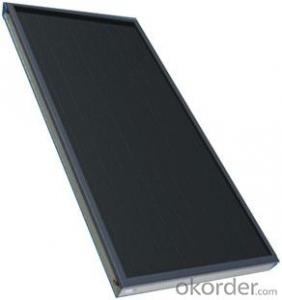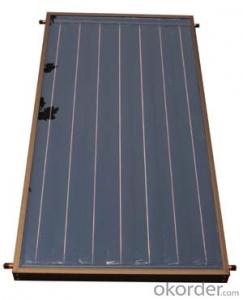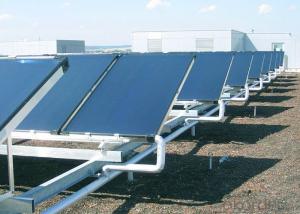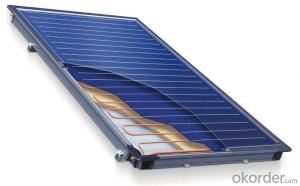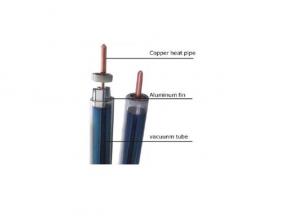Backyard Solar Collectors:Sunnyrain Heat Pipe Solar Collector, Solar Heat Pipe Vacuum Tube, Solar Thermal Collector
- Loading Port:
- Shanghai
- Payment Terms:
- TT OR LC
- Min Order Qty:
- 500 pc
- Supply Capability:
- 10000 pc/month
OKorder Service Pledge
OKorder Financial Service
You Might Also Like
Brief Introduction of solar heat pipe
1) The products use super heat condition pipe and has a good effect of heat exchange.
2) The insulation layers use the up-to-date technology and has a good effect of temperature preservation which allows the water to stay warm for about 70 hours
3) Superior heat-preservation ensured by one-off molding polyurethane foam with thickness 50-60mm
4) Stable and reliable performance,well wind resistance
5) Meet the mankind healthy bath standard,the material of inner tank is SUS304-2Bstainless steel plate,the silica gel ring sealing has a long life against the erosion and it do no harm to health.
Main Advantages of solar heat pipe:
1.No scaling2.No blasting3.water-tight4.Anti aging5.low temperature-resistant6.high temperature-resistant 7.Resistant to high temperature8.fast heat transfer9.high heat conductivity10.bearing pressure
1)Highly efficient zbsorber of high performance with daily average effciency over 40%-50%
2)Start up quickly heat pipe transfer the heat energy into the storage tank in one condition
3)With stand pressure of 0.2Mpa,can be connected directly with city water pipe
4)Highly efficient insulation with polyurethane foam
5)Can be used all year round even in the cold weather
6)Automatically controlled
7)Highly heat absorber and less in heat losing
8)For both flat roof and slope roof

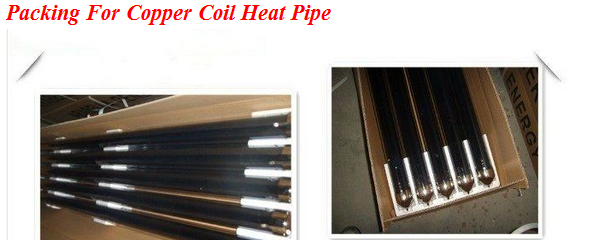
- Q: Can solar collectors be used for generating steam?
- Yes, solar collectors can be used for generating steam.
- Q: What is the minimum required sunlight for a solar collector to operate?
- The minimum required sunlight for a solar collector to operate depends on the specific technology and design of the collector. However, most solar collectors typically require a minimum of about 4-5 hours of direct sunlight per day to generate a significant amount of usable energy.
- Q: Can solar collectors be used in cloudy climates?
- Yes, solar collectors can still be used in cloudy climates. While the efficiency of solar collectors may be reduced in cloudy conditions, they can still generate some amount of energy from diffuse sunlight. Additionally, advancements in technology have led to the development of more efficient solar panels that can generate electricity even in low light conditions.
- Q: Can solar collectors be used for generating electricity on home appliances?
- Solar collectors have the capability to generate electricity for home appliances. These devices, also referred to as solar panels, are specifically designed to convert sunlight into electrical energy. Within these panels, there are photovoltaic cells responsible for absorbing photons from the sun's rays and transforming them into direct current (DC) electricity. This DC electricity can then be converted into alternating current (AC) electricity by means of an inverter. Consequently, this AC electricity can be utilized to operate a variety of home appliances. When homeowners choose to install solar panels on their roof or in other suitable areas of their house, they are able to harness the sun's power to generate clean and renewable electricity for their home appliances. This approach reduces their reliance on traditional grid electricity and consequently decreases their carbon footprint.
- Q: Can solar collectors be used for heating botanical gardens?
- Yes, solar collectors can be used for heating botanical gardens. Solar collectors can harness the sun's energy to provide heat for various purposes, including heating greenhouse structures in botanical gardens. This sustainable and cost-effective solution can help maintain optimal temperature conditions for plants and create a conducive environment for their growth.
- Q: Are solar collectors reliable?
- Yes, solar collectors are reliable. They have proven to be efficient and durable over time, with minimal maintenance requirements. They harness the power of the sun to generate electricity or heat, providing a sustainable and renewable energy source. However, their reliability can be influenced by factors such as proper installation, quality of materials used, and regular maintenance.
- Q: Can solar collectors be used in areas with limited access to business networks?
- Yes, solar collectors can be used in areas with limited access to business networks. Solar collectors generate electricity from sunlight, independently of any external network connection. Thus, they can provide clean and sustainable energy even in remote locations or areas with limited infrastructure.
- Q: How do parabolic trough solar collectors work?
- Parabolic trough solar collectors work by using curved mirrors to concentrate sunlight onto a receiver tube located at the focal point of the parabolic shape. The receiver tube contains a working fluid, such as oil or water, which gets heated up by the concentrated solar energy. This hot fluid is then used to generate steam, drive a turbine, and produce electricity. The parabolic shape of the collectors allows them to track the movement of the sun, maximizing the amount of sunlight they can capture throughout the day.
- Q: What is the effect of saltwater exposure on solar collectors?
- The effect of saltwater exposure on solar collectors is generally negative. Saltwater can corrode and damage the components of solar collectors, such as the metal frames, reflective surfaces, and electrical connections. This corrosion can reduce the efficiency and lifespan of the collectors, resulting in decreased energy production. To minimize the impact of saltwater exposure, regular maintenance, protective coatings, and proper installation in coastal areas are essential.
- Q: Can solar collectors be used for generating electricity on schools?
- Yes, solar collectors can be used for generating electricity on schools. Installing solar panels on school rooftops or in open spaces can harness sunlight to generate clean and renewable energy. This can help schools reduce their carbon footprint, save on electricity costs, and provide educational opportunities for students to learn about renewable energy sources.
Send your message to us
Backyard Solar Collectors:Sunnyrain Heat Pipe Solar Collector, Solar Heat Pipe Vacuum Tube, Solar Thermal Collector
- Loading Port:
- Shanghai
- Payment Terms:
- TT OR LC
- Min Order Qty:
- 500 pc
- Supply Capability:
- 10000 pc/month
OKorder Service Pledge
OKorder Financial Service
Similar products
Hot products
Hot Searches
